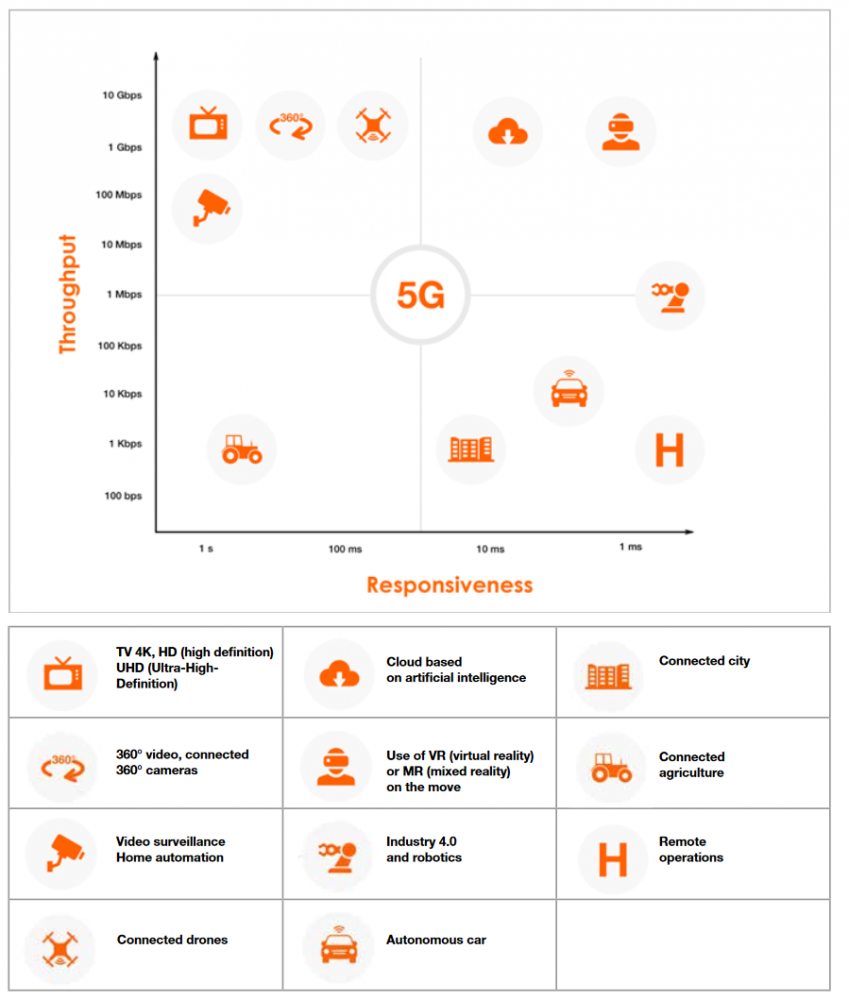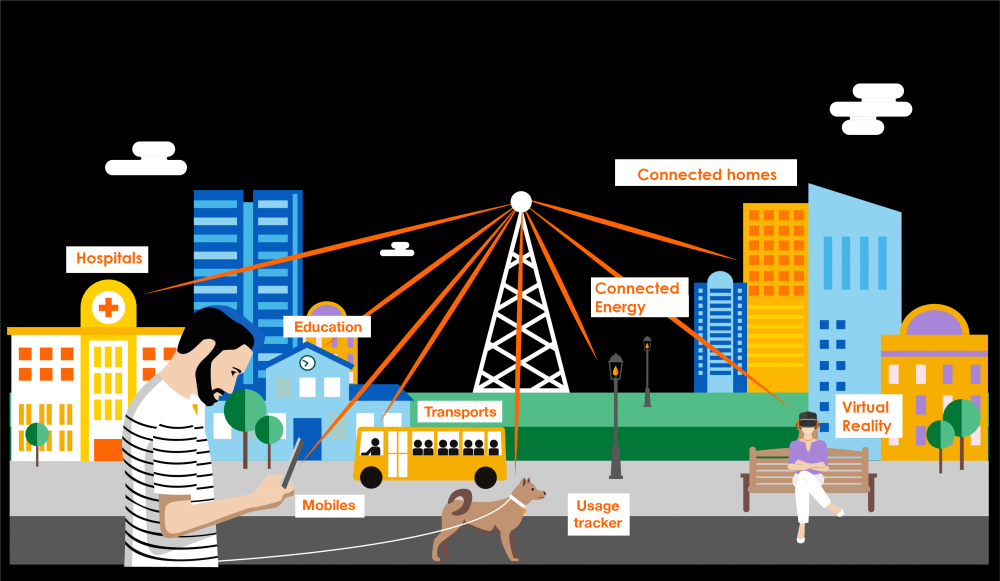- Radio Waves
- radio networks and antennas
- 5G
- The challenge for 5G
The challenge for 5G
How does 5G change my daily life?
5G* will offer the data speed and capacity necessary for the development of new generations of applications and services and entirely new commercial opportunities. The new emerging technologies such as virtual reality (VR) and augmented reality (AR) will be accessible to all when on the move.
*5G with compatible equipment and mobiles, only in the areas already deployed.

Virtual reality (VR) is already providing connected and immersive experiences that were previously impossible. With 5G, VR will take on another dimension: it will be possible to travel without moving, to watch a match as if you were on the pitch, to visit an apartment while sitting on the sofa, or even revisit the best of your holidays as if you were still there…
Augmented reality (AR) is already enriching reality by superimposing additional information. With 5G, there are even more possibilities: after entertainment with video games, it’s culture, education and also medicine and industry that will see further uses emerge.


New formats 4K, 8K, HDR or High Dynamic Range, 360°. This will benefit all users of video streaming, on smartphone or connected TV. And the users who film and show live videos, whether private individuals or professionals, are also set to benefit from the improved speeds and capacity offered by 5G.
4K : a digital image format with a definition that is greater than or equal to 4,096 pixels wide. 4K is called Ultra High Definition TV (UHDTV)
8K : a digital image format with a definition of 7,680 pixels wide
HDR : a technology that can display numerous levels of light intensity in a fixed or animated image
Future uses for 5G

What speeds and reactivity for different uses?
Speed and reactivity are 2 characteristics that will allow new uses to emerge. The most remarkable use is that of the autonomous car. For a driverless car, it will be necessary to have a network capable of identifying any obstacle on the road in near real-time.
That is why the autonomous car will rely on the extreme reactivity of the 5G network which, over time, will achieve response times of around a millisecond. On the other hand, for this use, speed will not have much of an impact.

Future uses for 5G
5G, with billions of simultaneously connected objects and its new applications, will make it possible over time to develop smart cities and schools, GPS plotters for objects and animals, home automation, smart and more reliable vehicles. It will also improve healthcare and education.
5G will enable companies to make their ways of working more efficient with smart data processing. Businesses will operate and take key decisions based on data. They will then be able to innovate in agriculture with smart farms and optimise manufacturing which will open the way for cost savings, a better customer experience and long-term growth.